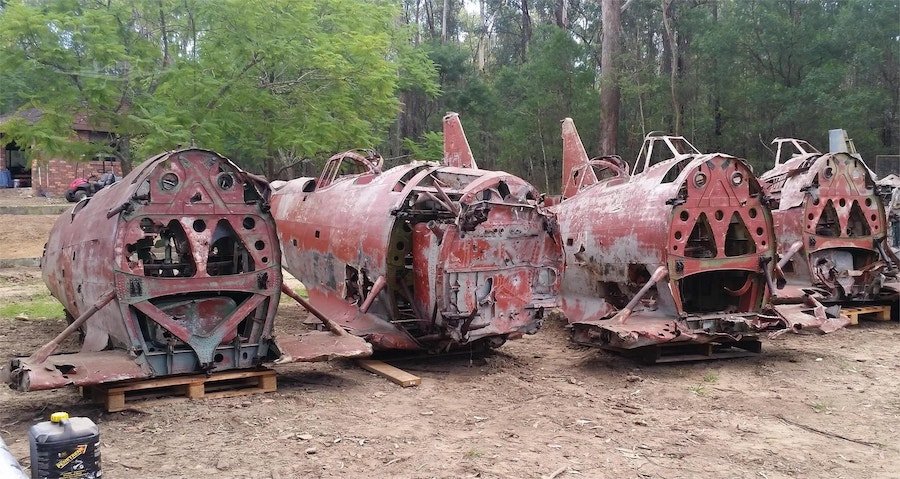Once Thought Extinct, These Four Japanese F1M2 Seaplanes Are Now for Sale

A handful of these long-forgotten reconnaissance float planes remain extant. However, you'd never know from looking at a lot of four of them for sale out of Blenheim, New Zealand. They all look more like miscellaneous piles of rusty scrap metal at this point. For untold decades, these four airframes endured the distinctly undignified process of rusting away, neglected by the world around it, and very much in danger of being snuffed out forever. But against the will of Mother Nature, these airframes survive. Now, it's time for one of us to take the initiative to get them restored.
In their day, the Mitsubishi F1M was never designed for front-line combat the way most iconic Imperial Japanese warbirds were. First deployed in 1941 and nicknamed "Pete" by the Allied powers, the F1M's biplane architecture and paltry 14-cylinder radial engine made it ideal for short-range reconnaissance at sea. Typically, these warbirds were carried aboard warships and deployed from catapults, conducting a visual recon mission of a designed area before returning to be re-armed and refueled.
The type of armament the F1M flew with reflects this: with only two 7.7 mm front-facing machine guns and one in the rear, the F1M was Wildcat and Corsair bait by the time the US Navy deployed to the Pacific Theater at the end of 1941. By the end of the war, the only role the F1M was useful for was as a sacrificial aircraft in the infamous Imperial Japanese Kamikaze campaign. Come the time of V-J day, only a handful of F1Ms remained, with a few being transferred to Indonesia just in time for their Air Force to help wage a war of independence against the Dutch.
From there, reserves of the once plentiful Japanese biplane spent the rest of the century in obscurity, routinely overshadowed by more Hollywood-friendly planes like the A6M Zero and Ki-43 "Oscar" soaking up the limelight in films and television after the war. Despite everything stacked against them, these airframes managed to survive. The only question now is what to do with them. Should the best bits and pieces from each airframe be merged into one display-worthy example? Or should all four be made presentable once again? Chances are good the former is the path of least resistance, aside from leaving them to rot even further, of course.

Nouvelles connexes


